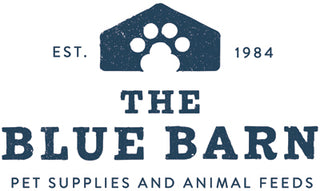
Guinea Pig Advice
Guinea pigs are small and gentle-natured, but lively too, they love being handled. They’re inquisitive, they’re quite vocal and they rarely bite or scratch. They live for between four and eight years and they’re not difficult to look after.
This guide will provide you with all the information you need to get started with your new Guinea Pig.
Feeding Guide
Guinea pigs need to keep their digestive system busy by having two types of fibre constantly moving through their gut. These two types of fibre are known as digestible fibre and indigestible fibre and come mainly from good quality hay. If they don’t get the right amounts of both digestible and indigestible fibre, it can rapidly lead to serious health problems. Guinea Pigs can’t get enough nutrition from fibre when it passes through their gut the first time, so they excrete caecotrophs (soft sticky type droppings) which are then re-eaten for vital nutrition. Guinea pigs also need additional vitamin C in their diet as they cannot synthesize their own.
Indigestible Fibre
Indigestible fibre is moved through their digestive system and excreted as separate, rounded, hard droppings. This type of fibre keeps the digestive system moving and their appetite stimulated.
Digestible Fibre
Digestible fibre is moved up into an organ called the caecum, where good bacteria ferment the fibre making it easier to digest. This then emerges as the caecotrophs (or sticky droppings) that they re-eat in order to get the essential nutrients from the digestible fibre when it passes through for the second time.
Diet
Their diet should consist of 5 main things:
- Fresh forage/ herbage - These premium quality hay and grass foods should form most of your pets’ diet. They are especially good for dental health as they contain high levels of Beneficial Fibre that help to wear down teeth.
- Tasty Nuggets - Nuggets contain 100% natural, wholesome ingredients, are naturally high in Beneficial Fibre for digestive health and have added vitamins, minerals and prebiotics. Because they’re not a muesli-style mix, they prevent selective feeding.
- Snacks - Nutritious natural snacks are ideal for guinea pigs as they promote emotional health – preventing boredom and encouraging bonding and interaction between you and your pet.
- Fresh Greens - Guinea pigs can be fed fresh greens to give additional fresh nutrients and to provide some variety.
- Fresh Water – Fresh clean water should always be available for your guinea pig.
Good Greens
Apples, asparagus, basil, broccoli, Brussels sprouts, cabbage, cantaloupe melon, carrots and carrot tops, cauliflower leaves and stalks, celery, chicory, Chinese parsley, coriander, cucumber, dill, garden cress, grapefruit, gooseberries, honeydew melon, kale, kiwi fruit, mangoes, oranges, parsley, parsnips, peas, red cabbage, romaine lettuce, Savoy cabbage, spinach, strawberries, tangerines, tomatoes, turnips and water cress.
Bad Greens
Potato and potato tops, rhubarb and rhubarb leaves and tomato leaves.
Companionship
Guinea pigs love company and should ideally be kept in single sex groups or pairs – litter mates make the best companions. Males and females can live happily together, but should ideally be neutered to prevent unwanted pregnancies.
Never keep guinea pigs with rabbits or chinchillas. They have very different food and housing needs and may fight. Although guinea pigs, rabbits and chinchillas are all fibrevores, they do have different nutritional requirements.
Housing
Traditional small hutches can compromise guinea pigs’ welfare as they do not allow guineas to behave normally. A hutch should actually only be viewed as your guineas’ ‘bedroom’. The hutch should be permanently attached to a much larger run or exercise area, so your guineas can decide when they go outside to stretch their legs. A good quality hutch provides shelter and protection from extremes of weather and temperature, is draught-free and predator proof, and is a cosy place to sleep. The bedroom area should be as big as possible allowing your guineas to;
- Lie down and stretch out comfortably in all directions.
- Tall enough for them to sit (and ideally stand) up on their back legs without touching the roof
- Bedroom area should be enough to allow all guineas to perform all the behaviors mentioned above at the same time if kept in groups/pairs.
Remove and replace soiled bedding daily and clean the hutch out completely every week to keep flies away. This is particularly important in warmer weather to help prevent fly-strike.
Neutering
Vets recommend that all guinea pigs should be neutered. It not only prevents unwanted pregnancies, it will also make your pets calmer and less aggressive. Please ask your vet about the correct age for neutering.
Grooming
If your guinea pig is a long-haired breed, groom daily to keep the coat in good condition. However, every breed likes some grooming and it helps to strengthen the bond of friendship between you and your pets.
Safe Handling
It’s easy to startle your guinea pigs when you approach them, so it’s best to crouch down and talk softly as you get nearer. Let your pets come to you – offer your hand to sniff, maybe offer a treat, then gently place your hand across their shoulder with the thumb tucked between the front legs on one side. You should then be able to slowly lift your guinea pigs and support their weight by putting your other hand under their bottom. You should then hold your pets on your lap or, if you’re standing, close to your chest.
Exercise & Play
Guinea pigs like to play, so make sure there are plenty of toys for them. Play makes them exercise, which is good for their physical health, keeping them happy and healthy. Guinea pigs are natural foragers, so hide some food so your pets can enjoy looking for it. In addition to providing nutrition, foraging mimics their natural behavior, keeps them occupied and prevents boredom.
